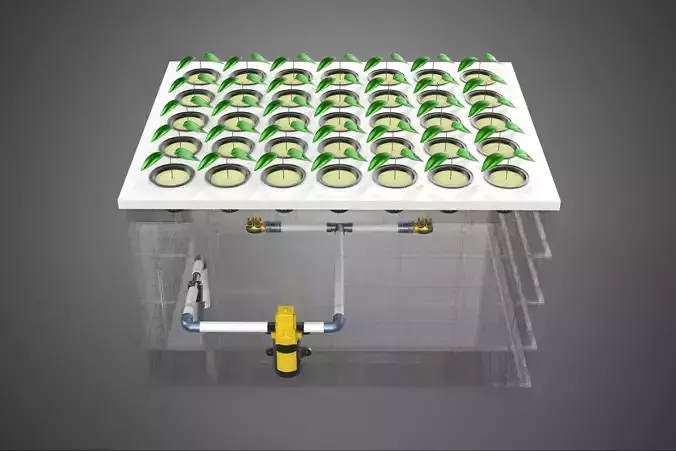1/41
High-quality 3D assets at affordable prices — trusted by designers, engineers, and creators worldwide. Made with care to be versatile, accessible, and ready for your pipeline.
Included File Formats
This model is provided in 14 widely supported formats, ensuring maximum compatibility:
• - FBX (.fbx) – Standard format for most 3D software and pipelines
• - OBJ + MTL (.obj, .mtl) – Wavefront format, widely used and compatible
• - STL (.stl) – Exported mesh geometry; may be suitable for 3D printing with adjustments
• - STEP (.step, .stp) – CAD format using NURBS surfaces
• - IGES (.iges, .igs) – Common format for CAD/CAM and engineering workflows (NURBS)
• - SAT (.sat) – ACIS solid model format (NURBS)
• - DAE (.dae) – Collada format for 3D applications and animations
• - glTF (.glb) – Modern, lightweight format for web, AR, and real-time engines
• - 3DS (.3ds) – Legacy format with broad software support
• - 3ds Max (.max) – Provided for 3ds Max users
• - Blender (.blend) – Provided for Blender users
• - SketchUp (.skp) – Compatible with all SketchUp versions
• - AutoCAD (.dwg) – Suitable for technical and architectural workflows
• - Rhino (.3dm) – Provided for Rhino users
Model Info
• - All files are checked and tested for integrity and correct content
• - Geometry uses real-world scale; model resolution varies depending on the product (high or low poly)
• • - Scene setup and mesh structure may vary depending on model complexity
• - Rendered using Luxion KeyShot
• - Affordable price with professional detailing
Buy with confidence. Quality and compatibility guaranteed.
If you have any questions about the file formats, feel free to send us a message — we're happy to assist you!
Sincerely,
SURF3D
Trusted source for professional and affordable 3D models.
More Information About 3D Model :
HIGH PRESSURE AEROPONIC PROPAGATION SETUP MISTING NOZZLE FOG KIT
A High Pressure Aeroponic Propagation (HPAP) setup misting nozzle fog kit constitutes the specialized hydraulic components designed for the non-recirculating delivery of aerosolized nutrient solutions to the root zones of plants suspended in air. This technology, foundational to Controlled Environment Agriculture (CEA), differs fundamentally from low-pressure aeroponics (LPA) or traditional hydroponics by achieving optimal droplet sizes necessary for maximum hydrokinetic efficiency and rapid nutrient uptake.
HPAP relies on the principle of nebulization, requiring the nutrient solution to be atomized into microscopic droplets, typically ranging between 5 and 50 micrometers (µm) in diameter. This size range is critical; droplets larger than 100 µm tend to accumulate on the roots, leading to anaerobic conditions, while droplets smaller than 5 µm may remain airborne, failing to coat the root mass effectively. To achieve this fine level of atomization, system pressure must consistently exceed 80 pounds per square inch (PSI), often operating between 90 and 120 PSI, facilitated by a robust positive displacement pump.
The comprehensive fog kit system typically integrates several critical hardware elements beyond the nozzles themselves, ensuring consistent pressure and media purity:
- High-Pressure Pump Unit: A critical component, usually a multi-stage diaphragm or piston pump, capable of sustaining high flow rates against significant back-pressure. These pumps often incorporate pressure sensors and safety bypass valves.
- Pressure Accumulator (Surge Tank): A sealed vessel containing a pressurized bladder (typically nitrogen or air). The accumulator dampens pressure fluctuations caused by pump cycling, prevents hydraulic hammer, and maintains a stable pressure gradient at the nozzle manifold, extending pump lifespan.
- Filtration System: Due to the minuscule orifice size of HPAP nozzles, rigorous multi-stage filtration is mandatory. Filtration typically includes sediment filters (down to 5 or 1 micron) to prevent mineral precipitation and particulate clogging.
- High-Pressure Tubing and Fittings: Utilizes specialized, reinforced, pressure-rated tubing (e.g., Nylon or PTFE) and compression fittings designed to withstand operational pressures up to 200 PSI.
- Misting Nozzles (Foggers): The terminal delivery mechanism.
### Misting Nozzle Technology
The nozzles are the most specialized element of the fog kit, determining the spray pattern and droplet spectrum. They are generally categorized as impingement pin, impact pin, or swirl-plate designs.
- Construction and Materials: To resist erosion from pressurized fluid and chemical degradation from nutrient salts, nozzles are usually constructed from corrosion-resistant materials such as stainless steel (303 or 316 grade), brass, or ceramic.
- Orifice Geometry: The orifice diameter defines the achievable droplet size and spray angle (often 60 to 90 degrees). Typical orifice sizes for HPAP range from 0.006 inches (0.15 mm) down to 0.003 inches (0.076 mm). The use of ceramic inserts is common for maintaining dimensional stability and extending nozzle operational life.
- Flow Rate (GPH): Nozzle flow rates are extremely low, often measured in gallons per hour (GPH), reflecting the precision required for root hydration without over-saturation.
### Applications in Propagation
In plant propagation, HPAP setups are utilized for cloning and seedling development, especially for high-value crops where rapid vegetative growth and high throughput are prioritized. The precise environmental control offered by HPAP minimizes pathogen exposure and optimizes oxygen availability to the root zone, leading to significantly faster root initiation and establishment compared to traditional methods.
KEYWORDS: Aeroponics, High Pressure, Propagation, Misting Nozzle, Fog Kit, Nebulization, Atomization, Nutrient Delivery, Root Zone, Droplet Size, Micrometer, Positive Displacement Pump, Accumulator, Hydraulic Hammer, Controlled Environment Agriculture, Cloning, Stainless Steel, Orifice, Filtration, Hydroponics, Diaphragm Pump, Pressure Rating, Swirl-Plate, CEA, Root Initiation, Pressure Cycling, Recirculation, GPH, Aeroponic System, Vegetative Growth.
REVIEWS & COMMENTS
accuracy, and usability.









































